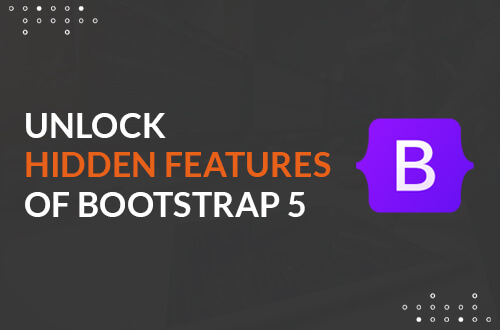
As the challenges business faces grow in both complexity and impact, so too does the growth in the adoption of Agile to solve those challenges. However, with so much focus on agile’s benefits and value, I’ve noticed that many organizations forget to put the time and effort into a critical first step of this adoption – the formation of an agile team.
Today, I will propose a remedy to that and a method to help you get the most out of this critical step towards agile.
Challenge Liftoff – A Workshop
“Liftoff,” as it is commonly referred to, is among the first steps to transforming to the agile methodology. Essentially, it is a way to ensure that everyone is prepared to work according to agile principles. And depending on the organization and the formation of the team, this step can quickly grow in importance.
If team members worked according to the Waterfall methodology, they’d need to adopt the agile mindset. Team members may have been previously working on specific roles like Tech Lead, QA, or so forth, but now entering into an agile team, those titles don’t hold any meaning. The team needs to understand the vision and goal they will be working on to achieve – and, most importantly, how to achieve it.
That is where Challenge Liftoff comes in and where I will show you how to design a workshop that achieves the Liftoff Agenda (more on that shortly) through activities that not only give your team purpose but build Alignment and context to achieve business objectives.
The Intent
Of course, organizations adopt agile to help them meet demand, increase productivity, and reduce time to market, but today, let’s view that desired outcome as the big picture. For Challenge Liftoff, the following is what you’ll want to accomplish:
- Introduce team members and stakeholders to foster camaraderie
- Bring the team on the vision, initiative, and planned outcomes to bring Alignment
- Define roles and responsibilities across the team and communication structure with stakeholders to clarify the organizational hierarchy.
- Discuss the environment, tools, delivery framework, and feedback loops to understand the supporting structure.
- Gather assumptions, expectations, and foreseeable risks from the team to consider or mitigate.
Now that you understand the intent behind the workshop, it is time to set your agenda.
Your Liftoff Agenda

The purpose of a Liftoff Agenda is to have a common understanding of the reason for the team’s existence, define initial intentions and plans, and begin team building. It doesn’t need to be complicated. Simply use questions that progressively lead the participants closer to reaching the objective at hand.
Here’s an example of questions to ask for a relatively common set of participants in this scenario:
Participants
- Product Manager
- Sponsor
- Scrum Master
- Liftoff Facilitator
- Scrum team
- Stakeholders
Question
- What will be the best starting point for everyone involved?
- Have we identified all the right team members?
- What will the team need to start, and start it well?
- What skill sets are required, and does the team need upskilling?
- What support is needed from the stakeholders to be successful?
- How to bring the team together as one unit?
- What are the challenges in communication within the team?
- Will the new information emerge during the Liftoff?
- How open are the stakeholders to adapt to further information?
Achieving the Agenda
Now that you’ve got your agenda solidified, you now have to achieve it. To do that, you create Purpose, you build and foster Alignment, and focus in and discuss Context. And in case your next question was, “How do I do that?” Here are some of my favourite activities to choose from.
Activities for Purpose
Problem-Solving Tree: Brings focus on the specific initiative in hand and define the purpose with collaboration from all based on the initiative.
Landscape Diagram: Helps in defining the purpose when solving ambiguous, uncertain, or complex problems.
Wicked Questions: Engage everyone in sharper strategic thinking by revealing entangled challenges and possibilities that are not intuitively obvious. Great for outside the box thinking.
Activities to Build Alignment
Circle of Questions: Engages everyone in the team to build Alignment around the purpose
1-2-4-All: Involves every individual is searching for answers, expressing silent conversations and insights before communal expression.
Wish Granted:: What is the core of the alignment? Grant it as a wish to the team and collate everyone’s thoughts.
Moving Motivators: Determine what motivates the team and learn how it builds alignment.
Circle & Soup: Gauges the team’s autonomy to carry out actions based on the Alignment proposed.
Activities for Context
Systemic Consensus: Sometimes, it is better to know who is not in sync with context rather than agreeing. Encourages people to say “No” and showcase their opinions.
Open Item List: Distribute context to different participants and see what thoughts they bring to the table along with action items.
Min Specs: This one must ABSOLUTELY be respected while you unleash the group to innovate freely. Respecting the Min Specs will ensure that context will be both purposeful and responsible.
You can find more information on these and other activities at Retromat, Liberating Structures, and Management 3.0 respectively.
Duration of a Liftoff Challenge

Determining the duration of a Liftoff Challenge requires planning, design, and iteration. You’ll need to negotiate a balance of objectives while ensuring participants have a cool-down period after each part.
In my experience, I’d estimate one day each for Purpose, Alignment, and Context. I’d also keep 1 day as a buffer and to make any final adjustments to the previous day’s agenda.
In short, I’d say you’d be safe with a 4-day duration that would maximize engagement and output while keeping operational interruptions to a minimum.
Take away
My experience with Liftoff is one of not only results but of education; and a continual one at that. To leave you with some helpful hints on conducting your own workshops, I’d encourage you to consider the following lessons I’ve learned along the way.
- A Pre-Work Session with respective stakeholders and team members to ensure a smooth liftoff is a must
- Use a Goodness Checklist to ensure that the team has one common and shared understanding of the outcome, vision, and customer.
- Prospective Analysis is the time to identify team members’ hidden and overt assumptions and consider the potential threats and hazards, and the opportunities and benefits that may lie ahead.
- An Outcome-driven Agenda can keep the Liftoff momentum and morale high and teams believing they are investing time and energy into something worthwhile.
Lastly, as a practice, I’ve always asked my Scrum Teams for a workshop to define their ground rules. But Liftoff provides a new way of thinking that includes stakeholders in the mix, enabling them to understand the team’s people, the effort they put forward, and their unique, emotional imprint on the project and those around them.
I would always suggest a shift to agile. But I would also insist that a Lift Challenge is a part of it.
Note: The concept of Liftoff has been widely explained in the book Liftoff: Start and Sustain Successful Agile Teams.



